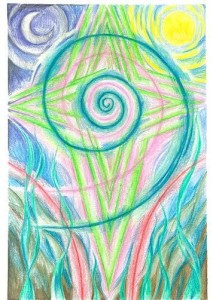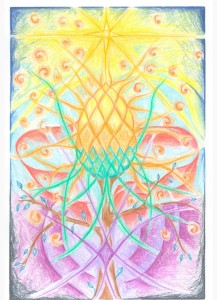Dear Toby ,
Often meditation and mindfulness work well when you use a short, significant phrase as your object of enquiry. In the article below I share one that I have been enjoying over the holiday season.
Wishing you, your families and loved ones all the very best for the Christmas season!
Toby & Integral Meditation Asia
 Experiencing the Mind as the Mind
Experiencing the Mind as the Mind
Often meditation and mindfulness work well when you use a short, significant phrase as your object of enquiry, which can then lead you relatively naturally into progressively deeper states of awareness. Over the Christmas holiday and winter solstice period the phrase I have been focusing upon is ‘Experience the mind as the mind’ (or my mind as my mind). This phrase invites me to connect to the experience of consciousness itself as directly and non-conceptually as possible.
Normally we experience our mind conceptually, dividing into different categories, for example:
- Positive and negative thinking
- Conscious and unconscious
- Practical and daydreaming
- Mundane and spiritual
- Busy and peaceful
- Upset or happy
With the practice of experiencing the mind as the mind I am deliberately setting aside all of these (useful in their own context) conceptual ways of experiencing my mind, and simply trying to experience the mind as a whole, directly in the present moment. At different times during the day different things will be appearing to my mind, which is fine, but I am focused simply to being conscious, and paying attention to what that experience feels like. As a result of this I have found that:
- Many of the things that my habitual and conceptual mind normally does not see start to become visible
- I naturally start to move back into the peaceful centre of my world and experience in the present moment
- I am freed to then think or approach my daily life and challenges with my experiential, problem-solving intelligence operating at a higher level
If you like over the next few days you can take experiencing ‘the mind as the mind’ (or your consciousness as your consciousness) as an object of mindfulness in your own meditation practice, either formally or informally, and allow it to invite you into the space of immediacy and presence that it invites!
© Toby Ouvry 2015, you are welcome to use or share this article, but please cite Toby as the source and include reference to his website www.tobyouvry.com
Upcoming Courses at Integral Meditation Asia
JANUARY 2016
Ongoing on Wednesday’s, (Jan 13th, 20th, 27th) 7.30-8.30pm – Wednesday Meditation Classes at Basic Essence with Toby
Saturday January 16th, 9.30am-12.30pm – Mindful Flow – Meditation & mindfulness for cultivating a state of optimal flow in your mind, body, heart and life – A three hour workshop
Saturday, January 30th, 2.30-5.30pm – Meditations for Transforming Negativity and Stress into Energy, Positivity and Enlightenment – A Three Hour Workshop
Integral Meditation Asia
Life-Coaching * Meditation Technology








